
Shelby Cobra race car CSX2323 replicated by 3 companies
By Steve Temple
Photos by Steve Temple and courtesy of Factory Five Racing
While the 427 Cobra is a big-block behemoth, the basso profundo in a symphony of classic muscle cars, there’s a higher note that cuts through its deep rumble. And it’s actually from the Cobra that made the car’s reputation on the road courses of Europe. The 289 FIA, (aka USRRC here in U.S.) was a leaner, more athletic version of its broad-shouldered, bigger brother.
It’s sorta like the difference between a scimitar and a battle axe. Both can slice and dice just about anything that comes their way, but the small-block version is more deft to handle.
Indeed, renowned Cobra racer Bob Bondurant never minced words about his preference for piloting the lighter, more agile 289 FIA over herding a nose-heavy 427 when hustling through the twisties. He felt a 351 Ford offered just the right balance of power and weight.
This advantage, however, hasn’t deterred the majority of Cobra enthusiasts from preferring replicas of the super-sized 427 version. Ordering a Double Whopper (with cheese, please!) is simply the American Way. But as the Cobra replica market has become more sophisticated, so has its aficionados.
Seeking a more toned, trimmed-down model without excess poundage up front makes good sense—and not just from a handling standpoint. On the 289 FIA, you can fit a more affordable small-block between the fenders, yet still be historically accurate. And with the increasing popularity of stroker versions of the 351 Ford, having 427 cubes of displacement on tap is still entirely feasible. It’s the mechanical equivalent of “putting the big pot in the little one.” And man, does this combo know how to cook—even hotter than the original.
Which leads to another aspect of the reproductions featured here—they improve on the chassis. After all, Shelby’s small-block Cobras used the antiquated Tojero setup, with spindly 3-inch round-tube frame rails and unpredictable transverse leaf springs (so much so that the car would oversteer and understeer at the same time on tight turns). Only after some suspension modifications by Ken Miles and using super-sticky tires could the car become a track star.
Today’s Cobra replicas compensate for these drawbacks in several ways. Which is why we rounded up a trio of smokin’ 289 FIAs from three different, well-respected manufacturers: ERA, Unique Motorcars, and Factory Five Racing (with the latter being the newcomer to this trio of road-course racers). Of course, companies such as Superformance, Kirkham, Shelby American, and others offer variants as well, but we’ll have to cover them in a later issue.
For now, we’ll focus on the merits of these three examples. Like the three tenors of opera-house fame, they each get a solo performance here, and we’ll see how they hold their own in hitting all the right notes.
UNIQUE MOTORCARS 289 FIA
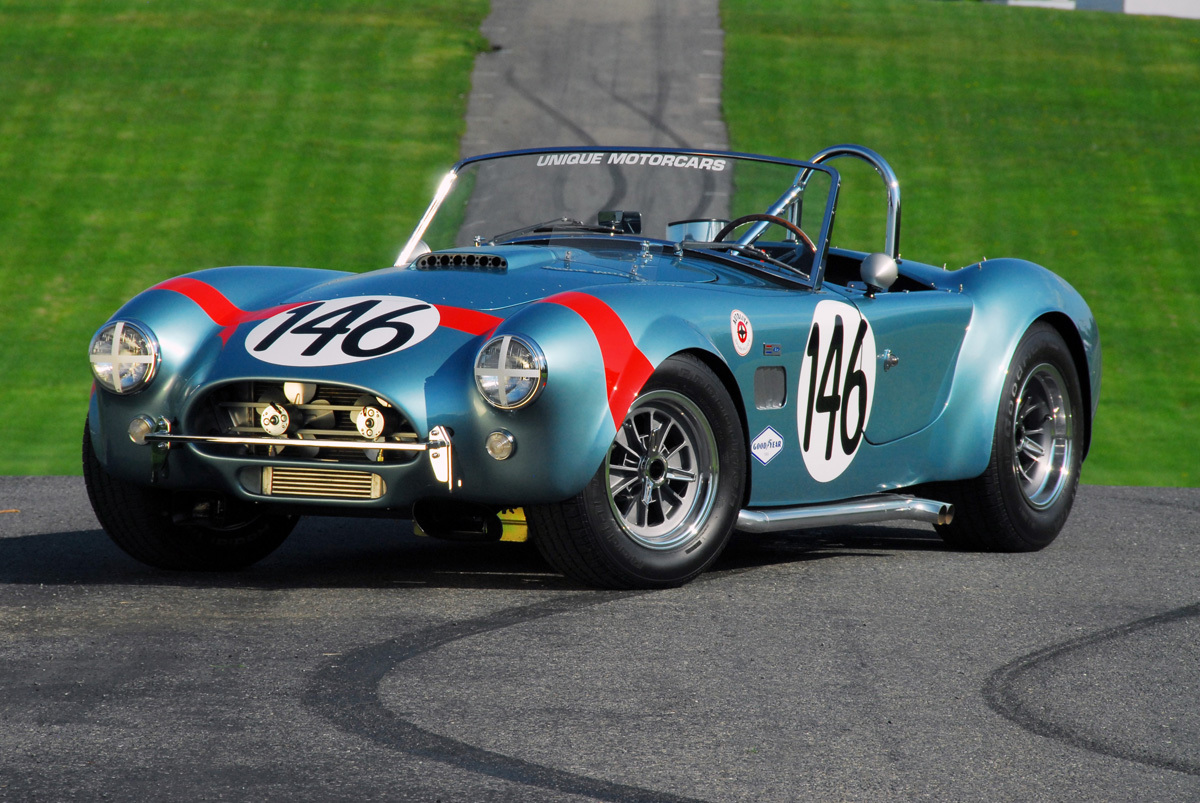
Project cars are never really done. They often go through many changes, both big and small, especially when the owner decides to emulate a particular race car. Take Butch Capps’ 289 FIA from Unique Motorcars, for instance. His original plan back in 2000 was to paint it ivy green, but Unique’s Alan Weaver convinced him otherwise, wisely pointing out that all original 289 FIA Cobras were Viking Blue.
“However, he did let me have the nose stripe in any color,” Capps relates, “as long as it was white, yellow red or orange, like the five team cars were in 1964.” Chassis number CSX2323 was orange (designated as Poppy Red), so he chose that one, largely because at that time all the other colors had already been used by Unique’s customers.
While the car was nicely executed, Capps later came across a photo of CSX2323 at Targa Florio in Italy, where it raced with distinction, finishing Second in GT class (and eighth place overall), with Dan Gurney and Jerry Grant sharing driving duties (note Grant’s signature on the hood of Capps’s car). After hanging this photo on a tool box and gazing at from time to time, and thinking, “Man, that’s a sweet race car,” Capps knew he had to make some changes.
Working with Maurice and Alan Weaver, they added twin side pipes, stone deflector and huge white meatballs, as a tribute to the racing livery worn by CSX2323 in 1964. This race car crashed later that same year, and after being rebuilt and sold, it competed in the ’65 season in several other paint schemes. So this graphic treatment reflects a particular point in time, one of the historical highlights of Cobra racing. Other items added to recreate the original included Trigo FIA wheels with safety-wired spinners, close-ratio 4-speed Toploader, a 3.54 ratio Dana rearend, and removable steering wheel, among other detailed items.
Not surprisingly, out of all the original’s paint schemes, “The version I like best is number 146 with the Targa Florio specifications,” Capps says. “You’re not going to see another just like it at the local shows. My car my be 14 years old, but meatballs, numbers, brake cooler ducts, stone deflector and decals make it drive like a new car. And the Tri-Y headers and twin side pipes play a 1960s tune at 2,000 rpm plus!”
This car was actually not the first Unique owned by Capps. Back in 1993 he ordered a 427 Deluxe Pallet Kit (which comes basically complete, except for installing the drivetrain and plugging in the wiring harness). Like most Cobra buyers, he thought the 427 body style was the only one to own. But a chance encounter changed all that.
“When in Unique’s shop, on the showroom floor was a Viking Blue FIA roadster that really caught my eye.” And that led to all the foregoing noted above.
After building Unique’s 427 S/C, Capps’ company, Mid South Gear Specialists, began a business relationship with Unique, supplying differentials and manual transmissions. “We build all of Unique’s differentials and some of its Toploader 4-speeds.”
Feeding power to the Toploader on Capps’ 289 FIA is a 289 Ford, bored .040 to open it up to 294 cubes with a 9.7:1 CR. It spins Eagle H-beam rods, and is fitted with a Cobra Hi Rise intake, Holley 715 LeMans float-bowl carb, and Canton oil pan.
As for the chassis, the same setup is used on both the 427 and 289 replicas. A box-tube frame runs a custom front suspension steered by a MGB rack, and Jaguar independent rearend, and each corner is fitted with Wilwood disc brakes.
So all told, while Capps’ 289 FIA has a precise period treatment, it benefits from advances in automotive technology. With modern mechanicals, it improves on the original, and still strikes like a Cobra.
ERA 289 FIA/USRRC
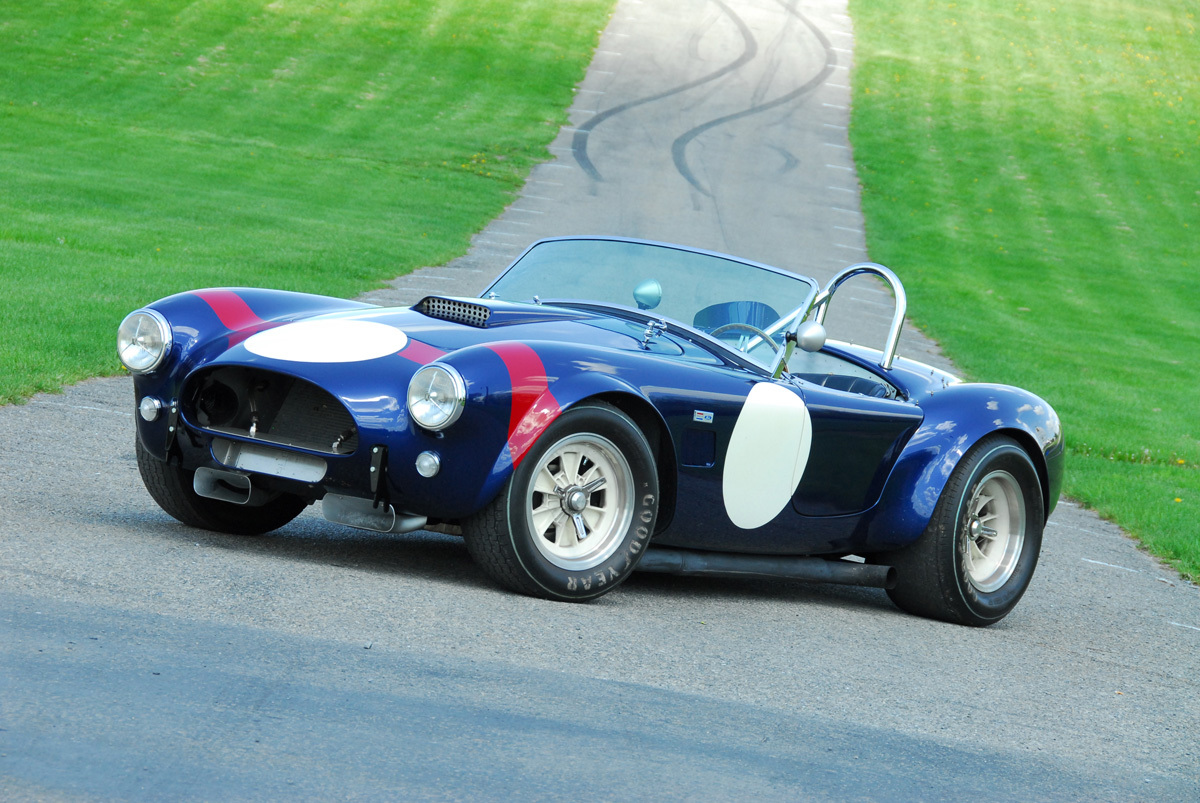
An amalgam of sorts, this version of Cobra combines details from both the original FIA and USRRC race cars. The color is a darker blue, similar to the USSRC cars, but with a red “recognition” nose stripe as used on the FIA team cars. (The USRRC cars had longitudinal white stripes.) There are other differences, as its owner Jim Holden points out:
“I originally had a short, plexi, curved racing screen in front of the driver as utilized on the USSRC cars,” he notes, since they were not required by the rules to have a full windscreen. “I eventually swapped that out for a regular 289 windshield, but laid back at an angle, as on the FIA cars that were required to carry full windshields. Passengers complained that when they got whacked in the head by a bumblebee at 60 to 70 mph, it almost knocked them out.”
Another difference is that the trunk lid does not have the dimples as was needed on the FIA cars to clear the mandatory “suitcase” each car was required by the rules of the time to carry. The USRRC rules did not require the suitcase and thus, no dimples. Holden made another change as well
“I also installed a curved baffle around the gasoline fill flip-cap as on the USRRC cars. It was used, so I understand, to prevent the wind passing over the car at speed, as a result of the lack of a windshield, from siphoning the gas out of the fuel tank.”
Taking matters into his own hands even further, the drivetrain consists of a Dart 302 Windsor block, stroked to 331 cubes, and five-speed TKO trannie. Preserving the period look, the mill is topped with Shelby Racing’s Weber intake and four 48 IDA dual carbs. After describing the sidepipes as being plugged into an angry little motor to make music, Holden says this setup “...makes for a stout combination and I have enjoyed driving and showing the car immensely over the last several years.”
When asked about the power output of this mill, Holden replied: “Plenty.” And he knows well of what he speaks, having built seven, yes seven, ERAs over the last 30 years (two GT40s, 3 ERA 427s, an ERA 289FIA and an ERA 289). And that doesn’t include a few Porsches and other projects in progress.
The buildup on this particular car starts with ERA’s box-tube frame, reinforced with an X-member for more torsional rigidity. At the front are ERA’s proprietary A-arms and uprights, and Spax adjustable coilovers. For the rearend, Holden tracked down a dilapidated Jaguar XJ6. After paying $80 to get the car towed out a farmer’s field, he had the rearend completely disassembled, and only center section was re-used with ERA’s outboard custom rear assembly. All told, this chassis is the same one used on ERA’s big-block Cobras, so it’s clearly overbuilt.
After ERA mounted the body on the rolling chassis, off to paint it went. When it came back from Tony’s Paint Shop in Massachusetts, the elves at ERA installed the inner aluminum panels and Holden then took delivery of the car on dolly wheels, ready for final assembly.
“The car went together in about a month and a half,” Holden relates. “Mostly on weekends with a lot of standing and sitting around, wine glass in hand, and the BBQ grill waiting just outside the garage.”
Once it was up and running, he ran into a minor problem. When Holden got remarried (after his first wife passed away), he acquired a couple of grown sons as part of a package deal. They all have the same passion for motoring as him, and he doesn’t hold back the keys to all his other cars as well.
“Now I could be upset, but, on the contrary, I consider myself the most fortunate of motor maniacs,” he says. “A part of a (large and very loud) family that shares a passion for things automotive and to have the ability to enjoy a selection of cars acquired over the years that all can enjoy.
FACTORY FIVE RACING 289 FIA
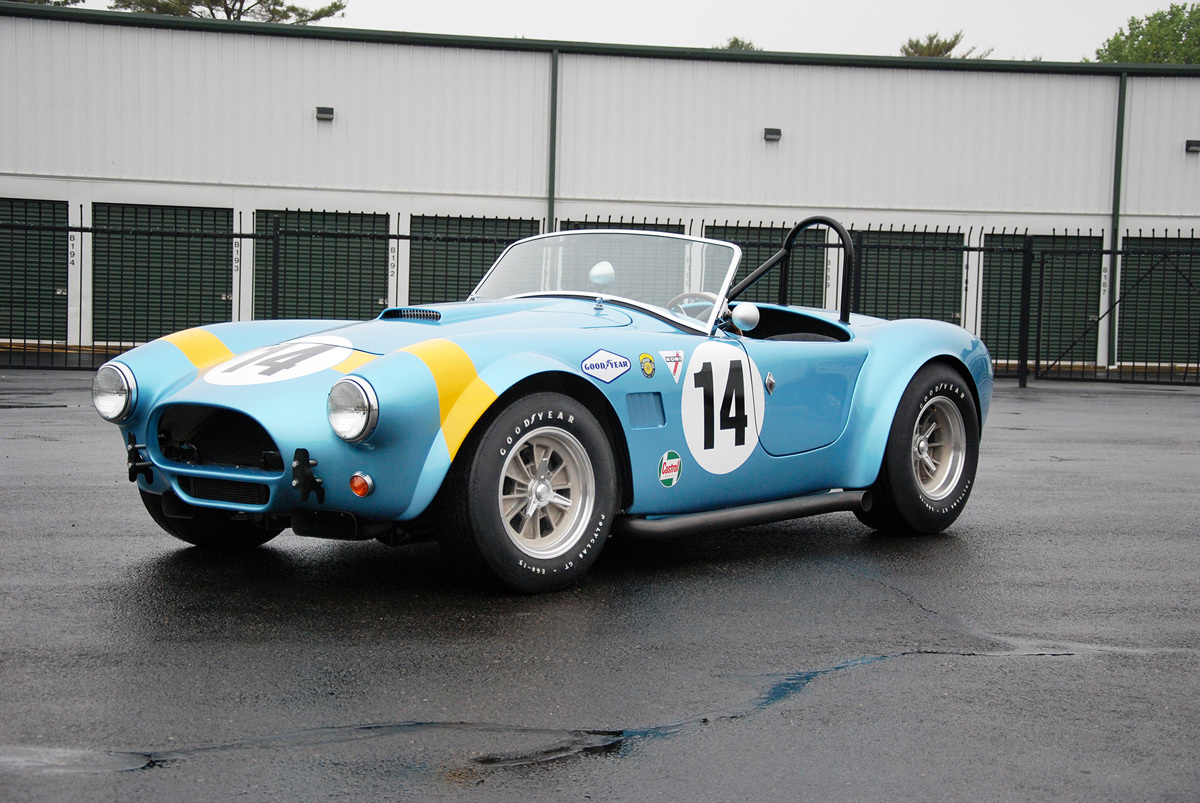
What do you do after having built more 427 Cobra replicas than any other company in the world? And also producing a Daytona coupe, mid-engine exotic, street rod and a “world car” with a Subaru drivetrain. What’s next?
Simple—go back to your roots. With a name like Factory Five Racing, you create an exacting reproduction of a legendary race car, the 289 FIA.
What’s remarkable is that FFR wasn’t all that concerned about the lack of a strong business case for building yet another Cobra replica, given that several other companies already are doing so, as noted in this issue. No, what motivated Dave Smith and his crew to build a 289 FIA was simple: “We wanted to.” This gear-head passion for motorsports has been driving the company right from the get-go, and runs deep in its veins.
So what differentiates the FFR 289 FIA from others on the market? To start with, the original inspiration was from CSX2260 #14, raced by Dave MacDonald, Jo Schlesser, Phil Hill, Innes Ireland, and Masten Gregory. Besides its competition pedigree, FFR’s Dave Smith prefers the look of this particular car’s fender flares and stance, among all the other design variations done back in the Sixties, and went to some pains to make this body dimensionally correct in all its details. (The specifics are too numerous to list here, so we recommend checking out FFR’s website for a summary.)
The chassis is another key difference. FFR uses a frame with four-inch (instead of three-inch, as on the original) round tubes. Also, while most other 289 FIA repros employ solely an IRS, FFR offers a broader range of choices, including a live-axle setup. By offering several setups, the same ones used on the company’s 427 Mk4 model, a customer can opt for either the feel of the original IRS, or have the advantage of the sturdy, track-proven 3-link used on FFR’s spec-series racers, along with all the shock and suspension options.
As we go to press, a demo car for driving was not readily available (which we hope to rectify soon), but having driven a number of FFR’s 427 models, we have no doubt that this chassis can be made to work in whatever application, from street to track, that a builder might have in mind.
The engine on FFR 289 FIA shown here has way more ponies on tap than the original 289 small-block Cobras did, which were variously rated anywhere from 271 to 303 hp. FFR’s kit comes configured to accommodate the 289 or 302 engines, which means a 351 can fit as well.
Ford Racing supplied a 347ci mill, rated at 450hp at 6000 rpm (with headers and a 650cfm Holley carb), and 400 pounds of torque. But this particular application has Weber IDA 48 carbs from Redline for a period-correct treatment. While a Weber induction system has a reputation for being a bit finicky to work on (especially in order to avoid a “flat spot” in the power curve), tuning Webers can be “easy if you know how”, and make for a truly satisfying setup.
In keeping with this historic look, FFR’s 289 FIA package includes alternate drive pulley assembly, oil filter relocation kit, and exhaust assembly to adapt a Mustang engine and headers to vintage, single-tube side exit exhausts. So basically, in order to head out on the track, all you need to supply is the drivetrain and a paint job with racing livery.

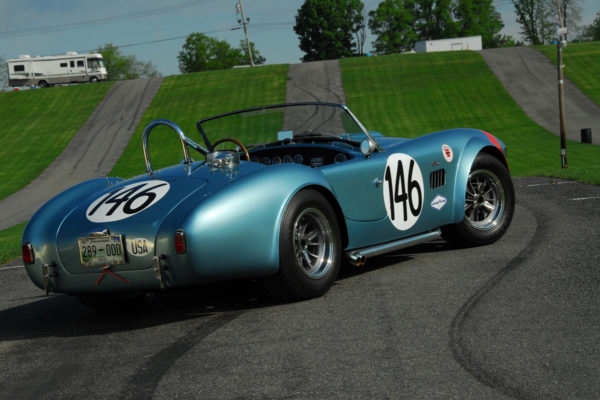
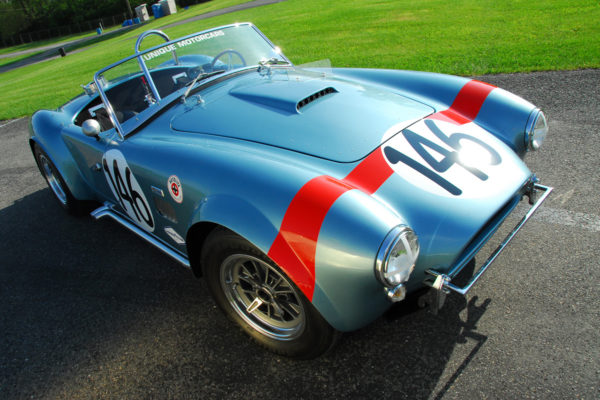
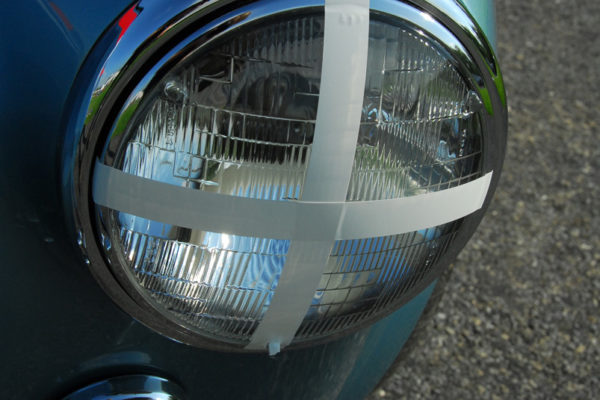
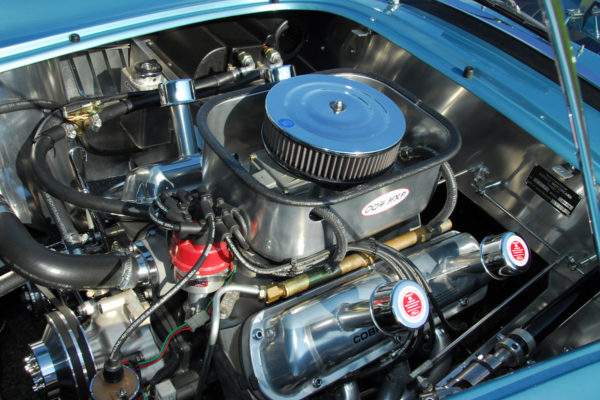
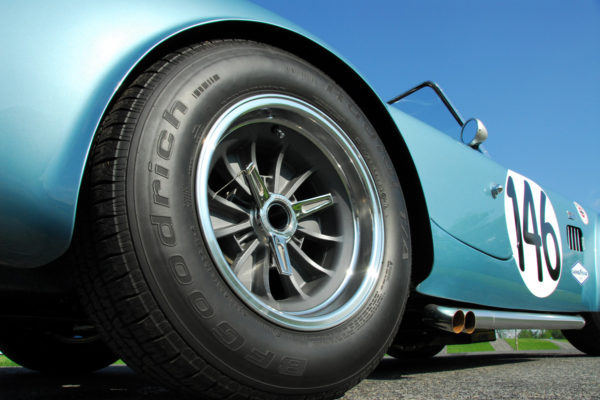
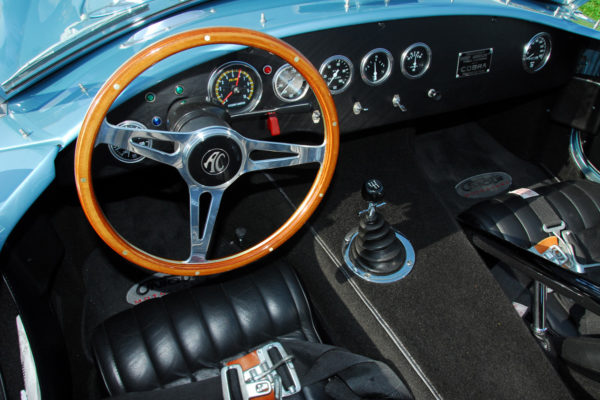
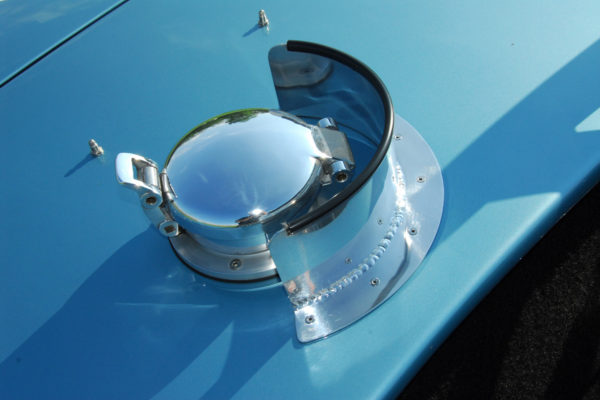
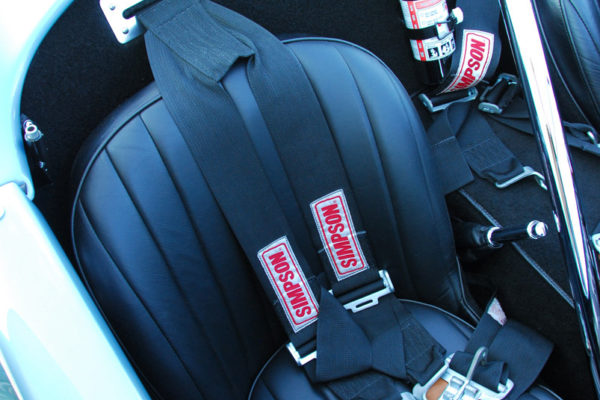

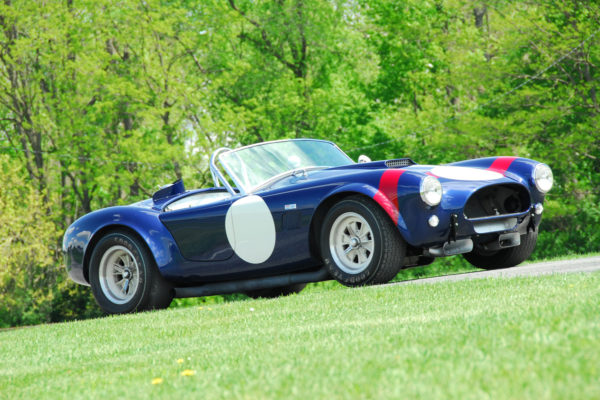
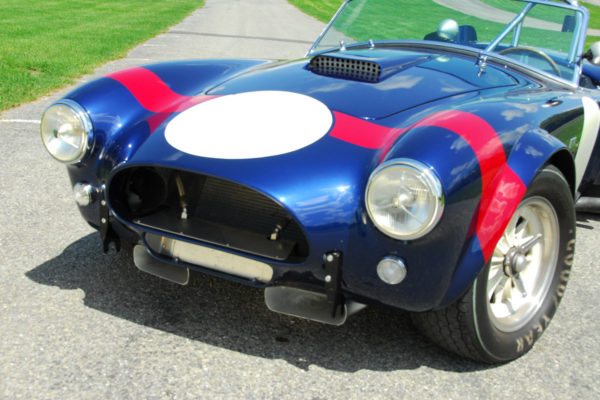
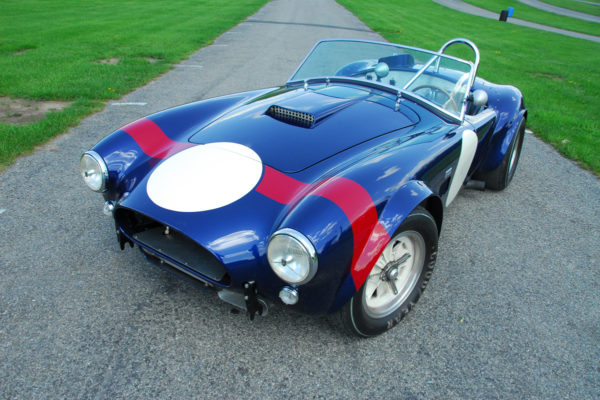
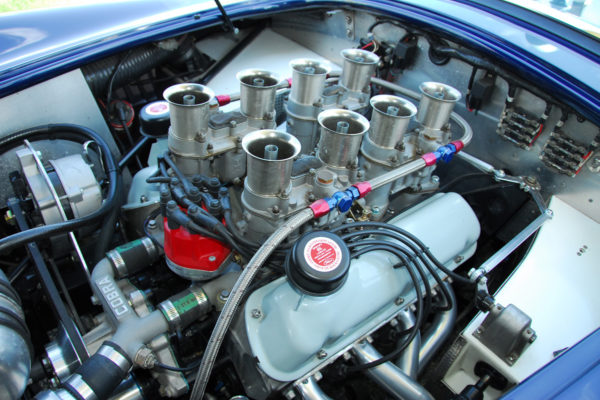
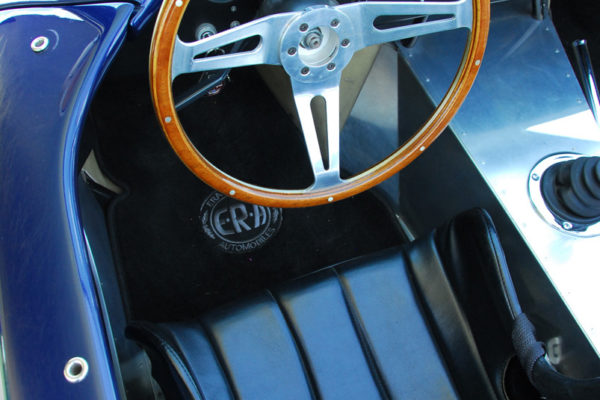
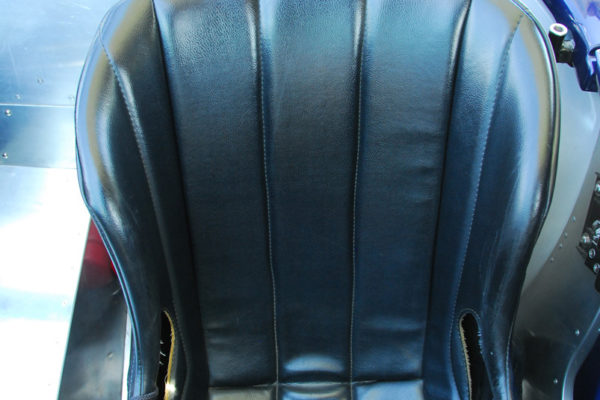
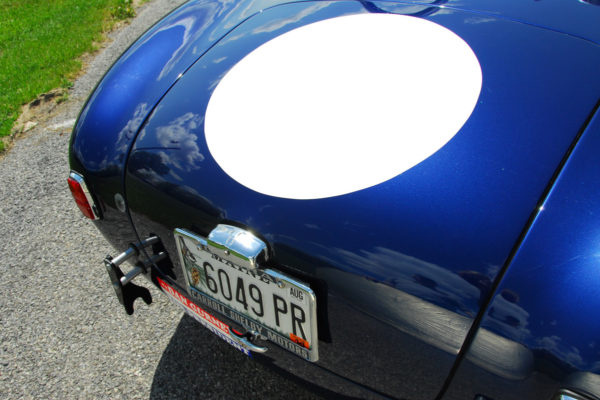
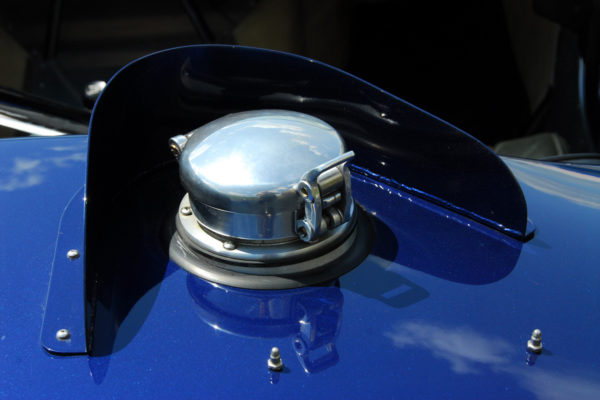

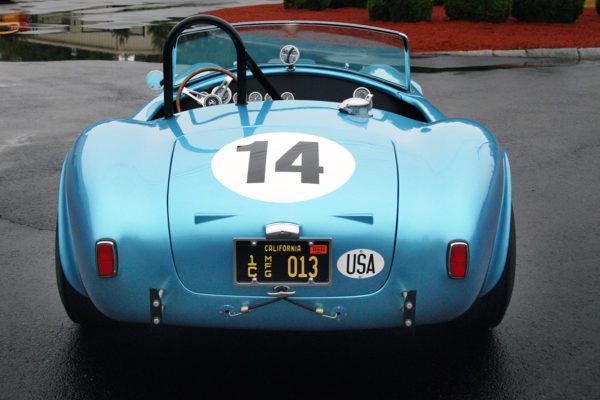
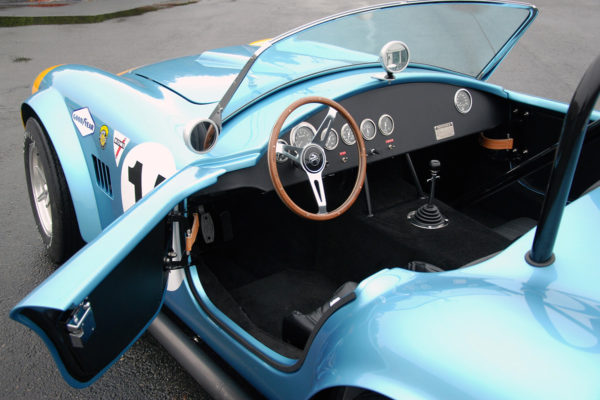
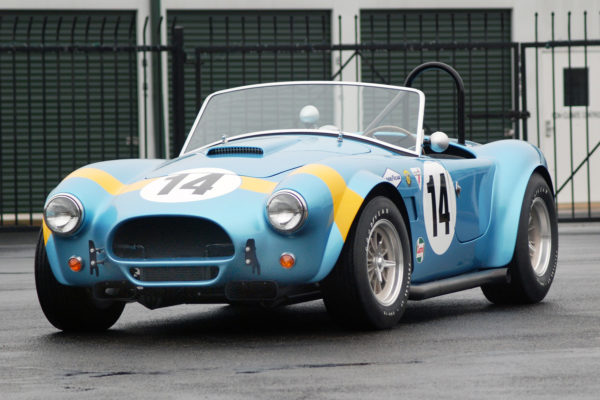
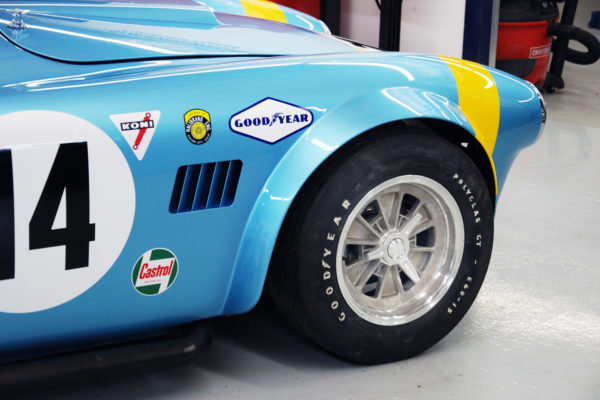
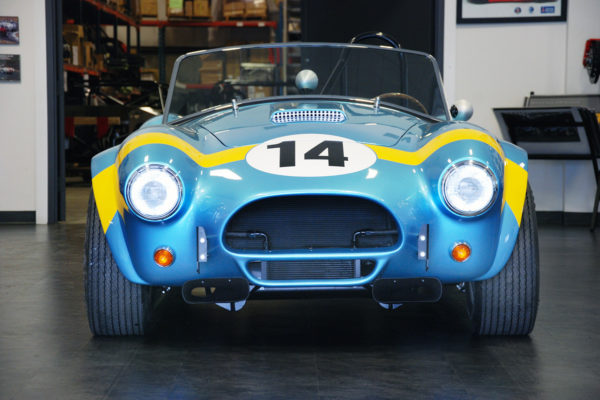
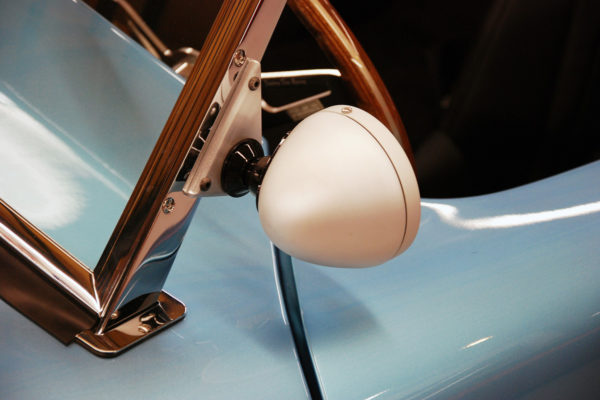
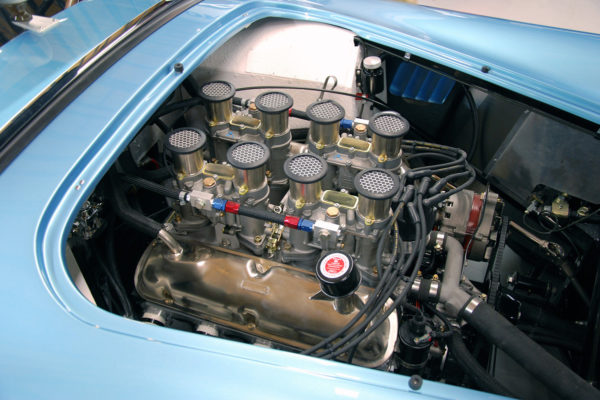
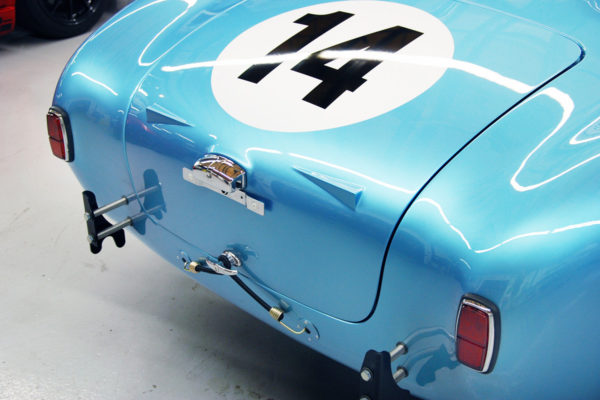
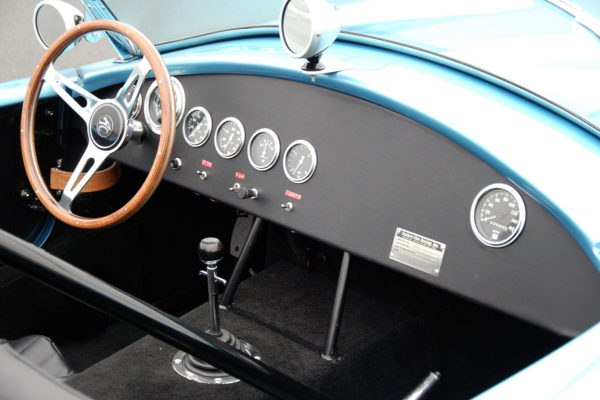
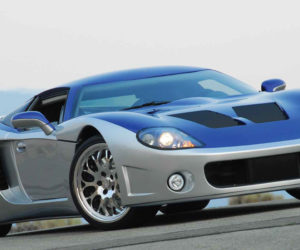
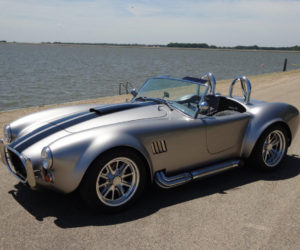
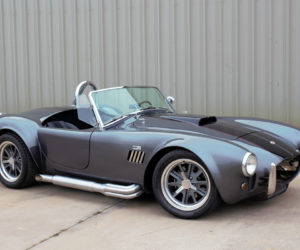
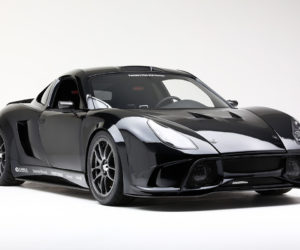
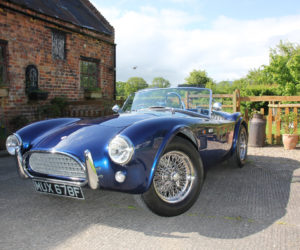
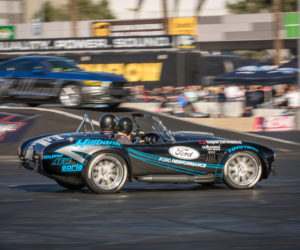




Comments for: THE THREE TENORS
comments powered by Disqus